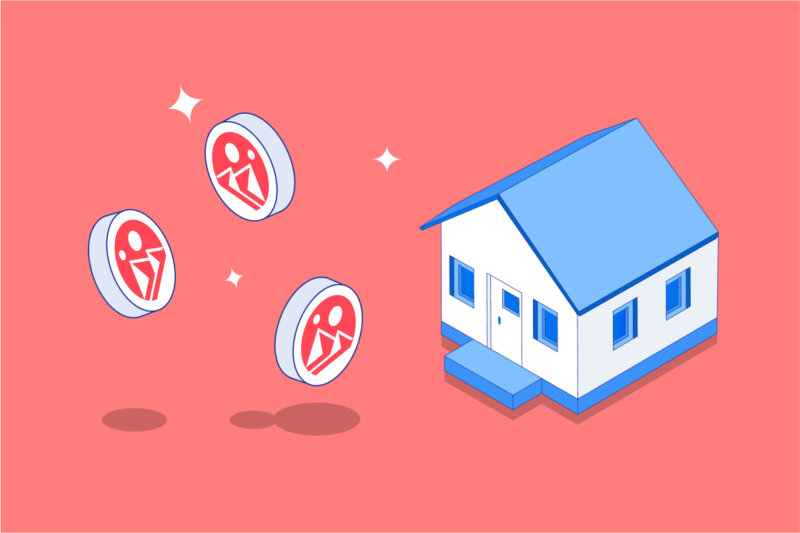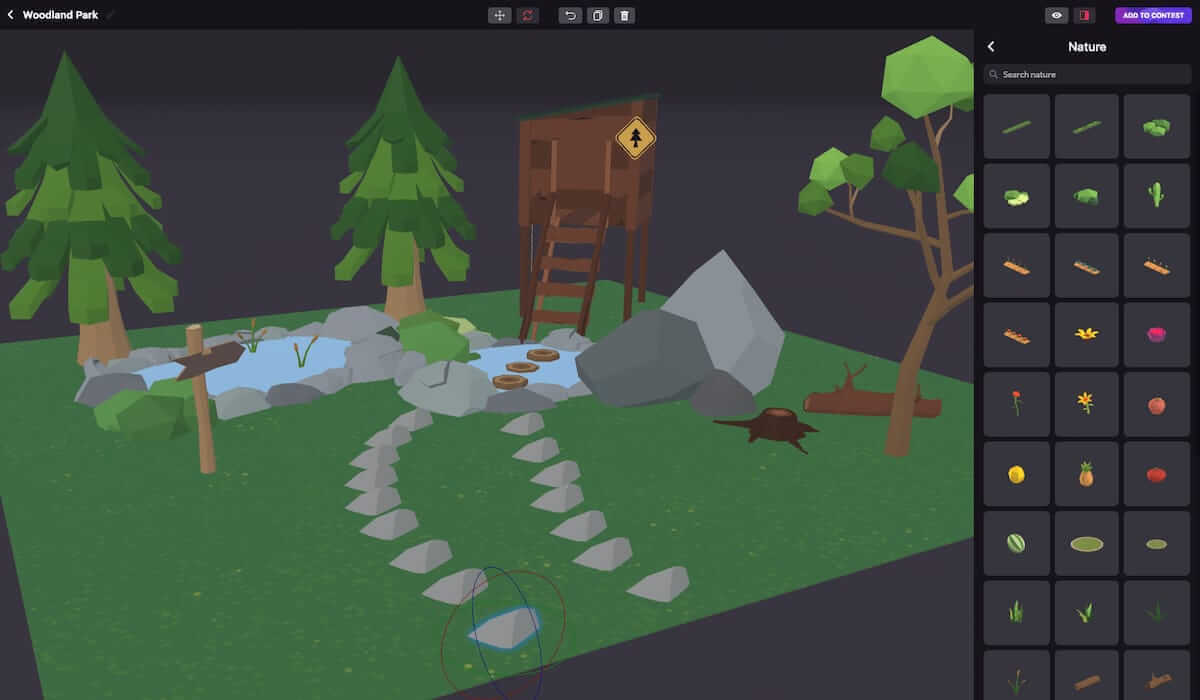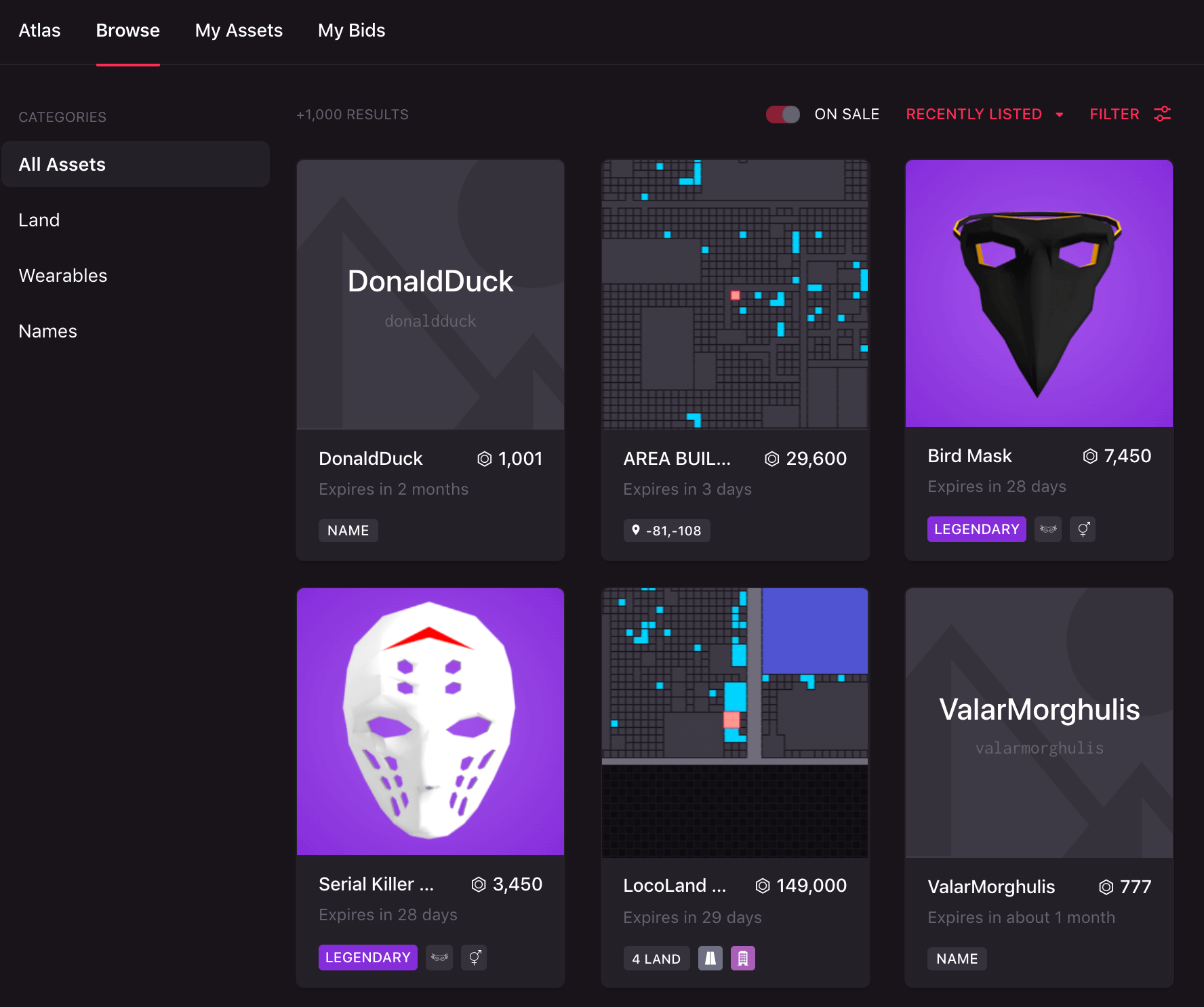
Imagine a utopian world where nearly anything is possible. A world where you can interact with friends, build sprawling landscapes, and even become a renowned real estate broker dealing in digital property. A virtual world where you can interact with everything around you. These are just some concepts the blockchain-based Metaverse is bringing to society.
While these groundbreaking ideas are exciting, how do they work in practice? This guide explores the ins and outs of Decentraland, one of the most advanced metaverses built using the blockchain.
What is Decentraland?
Decentraland is an immersive, virtual world built on Ethereum’s blockchain. It is one of the most developed metaverses and hosts over 300,000 unique accounts. In this virtual world, people can connect with others worldwide and live an extension of their everyday lives – in the digital world.
Decentraland is as much a game as it is a sandbox. The possibilities of what can be achieved when “playing” the game are constantly being updated. The 3D reality is experienced through an avatar that can participate in exploration, building, and mini-games – much like Minecraft or Roblox.
However, Decentraland also has a huge economic component. It can be viewed as a case study on the transferability of real-world value into a digital reality. Users can trade for in-game goods, purchase fine art to put in their virtual homes, and sell unique experiences (like escape rooms) to other participants.
Did You Know?
Decentraland was developed by two Argentinians, Esteban Ordano and Ari Meilich. It has been in production since 2015 and eventually reached the public in January 2020. However, elements of the metaverse – such as land management – have been open since 2017.
How does Decentraland work?
Decentraland is a decentralized virtual world that leverages blockchain technology. This means the game’s rules and future direction aren’t dictated by its developers, but rather, by its participants.
The Decentraland economy uses a combination of fungible and non-fungible tokens (NFTs). NFTs can represent pretty much everything – real estate deeds, rare avatars, and in-game clothing. These items can then be traded with other users to create an organic financial system.
But there’s more to Decentraland’s thriving community than just in-game actions. Two core elements allow the virtual world to succeed: the Decentraland Builder and the marketplace.
Builder
The Decentraland Builder (Figure 1) is a simple drag-and-drop interface that participants can use to create real estate, experiences and games within the world. To build, users need at least one LAND parcel. LAND parcels can be combined adjacently, letting people manufacture massive theme parks, galleries and more – all of which can be monetised.

Figure 1 – The Decentraland Builder interface
Marketplace
Decentraland’s marketplace (Figure 2) is vital to the platform’s economic viability. This is where players can buy, sell, and trade in-game items – such as LAND parcels and other digital assets like clothing. The marketplace is built on the Ethereum network, so users must use an Ethereum-compatible wallet to participate. The native assets of the Decentraland marketplace are called LAND and MANA.

What are LAND and MANA?
MANA
MANA is Decentraland’s native in-game currency. It is a fungible ERC-20 token used to participate in the virtual world. MANA can be used for nearly everything within the game: customising avatars, participating in auctions to buy LAND, or paying entry to the Amusement Park district (yes, it’s a real thing). The community can also use MANA to join in Decentraland’s governance. This token can be earned in-game, by selling goods in the marketplace, or purchased on third-party exchanges.
Key Takeaway
Because Decentraland is a virtual, immersive world, a good way to think of MANA is like a local fiat currency. For example, you can’t go to the United States and expect to buy goods and services using AUD. By the same token, Decentraland players cannot use Bitcoin or other cryptocurrencies to interact with the world around them.
LAND
LAND is an ERC-721 token, the same token standard used by NFTs on the Ethereum network. It is a non-fungible asset that gives owners the right to build upon a plot of digital land. Each LAND token has a unique XY location coordinate and ownership record encoded into its data. Players can purchase LAND with MANA tokens on the Decentraland marketplace or by attending virtual auctions. Like MANA, LAND assets give their holders voting rights on governance.
How to play Decentraland
Like many other virtual worlds, Decentraland is a free-to-play, open-world sandbox. This means that new users can play the game in any way they desire. Players can decide whether they want to socialise and attend events, explore and interact with the world, play games, or build a real estate empire. Those that don’t wish to participate in the economy need very little to get started – a PC or MAC running Chrome or Firefox is all that’s required. Decentraland cannot be played from a mobile device, although the developers are working on compatibility in the future.
For the full experience, players need a compatible digital wallet connected to their accounts. Decentraland recommends using Metamask, an Ethereum-based browser extension. This wallet will store MANA and LAND parcels and can also interact with Decentraland’s marketplace. Users can earn MANA through daily rewards or participation without any starting capital.
Did You Know?
A common misconception about Decentraland is that a virtual reality (VR) headset is required to play. This is not true. You can play Decentraland using just a computer and the internet. This misconception is most like due to it being erroneously referred to as a “decentralized virtual reality platform”.
Decentraland governance
Most modern-day virtual games operate within a strict set of rules dictated by the games’ creators. Thanks to blockchain technology, Decentraland does away with this paradigm. The game uses a decentralized autonomous organisation (DAO), where token holders can vote and decide on everything related to the world and its development.
Two potential governance tokens can be used: MANA and LAND. MANA tokens represent one vote on any governance proposal. Before they indicate voting power, MANA must be locked (staked) into the DAO, which converts it to wrapped MANA (wMANA). These tokens cannot be spent or transferred until they are unwrapped, which strips the owner of their voting power.
Conversely, LAND tokens represent a 2000-vote stake in governance proposals. Unlike MANA, LAND does not need to be staked before being used to participate in Decentraland’s decision-making process.
Key Takeaway
The Decentraland world is intended to be a digital reflection of society without the physical and social limitations of the “real world”. To achieve this, the developers have set up a DAO so the virtual world’s governance follows a democratic process. The non-profit Decentraland Foundation oversees the game and DAO.
Decentraland use cases
Social
Decentraland, and the metaverse in general, is primarily a shared virtual world or social hub connecting people from around the globe in a shared experience. Communities can gather in a virtual space, play games, run estates, and even go clothes shopping together.
Applications
Users with LAND tokens and coding knowledge can create applications (known as scenes). These immersive experiences might include a theme park, an art gallery, or a haunted house.
Content development
Content creators, like streamers and musicians, can use Decentraland to their advantage. They can curate communities for fans all over the world to interact and enjoy otherwise impossible experiences.
A great example is Snoop Dogg, one of the biggest proponents of Decentraland. The famous rapper owns property in the virtual world and is striving to create a district known, predictably, as the ‘Snoopverse’. Fans were quick to snap up the opportunity to become Snoop’s neighbour. In 2021, one of his admirers paid a whopping $450,000 USD to buy real estate next door to his mansion in Decentraland.
Marketing and advertising
Decentraland is just like contemporary society – and what’s a society without advertising? Businesses, content creators and entrepreneurs have begun buying LAND and setting up billboards in high-profile areas. Some new companies even specialise in leasing out advertising space within Decentraland, such as Decentraland Architects.

Figure 3 – Advertising inside Decentraland
Digital collectables
Much of the Decentraland economy is built upon NFTs segmented by rarity. Artists and collectors alike can thrive within this community by creating and trading digital items. The scarcity system helps bring an element of realism and accomplishment to collecting these NFTs.
How to buy MANA
You can buy MANA from most cryptocurrency exchanges. Swyftx is a well-known crypto exchange where Australian and New Zealand customers can purchase MANA with low fees and store it in a personal crypto wallet.
Summary
Decentraland is an exciting 3D virtual world that has more than five years of development behind it. Whether users want to sample cafes across Genesis Plaza, play mini-games, or create unique content, the platform’s possibilities are near-endless. The game is completely free to play and over 300,000 accounts have been registered to date. Just how far Decentraland can go remains to be seen, but the future looks bright.
Disclaimer: The information on Swyftx Learn is for general educational purposes only and should not be taken as investment advice, personal recommendation, or an offer of, or solicitation to, buy or sell any assets. It has been prepared without regard to any particular investment objectives or financial situation and does not purport to cover any legal or regulatory requirements. Customers are encouraged to do their own independent research and seek professional advice. Swyftx makes no representation and assumes no liability as to the accuracy or completeness of the content. Any references to past performance are not, and should not be taken as a reliable indicator of future results. Make sure you understand the risks involved in trading before committing any capital. Never risk more than you are prepared to lose. Consider our Terms of Use and Risk Disclosure Statement for more details.
